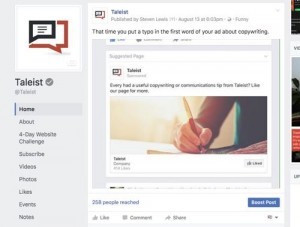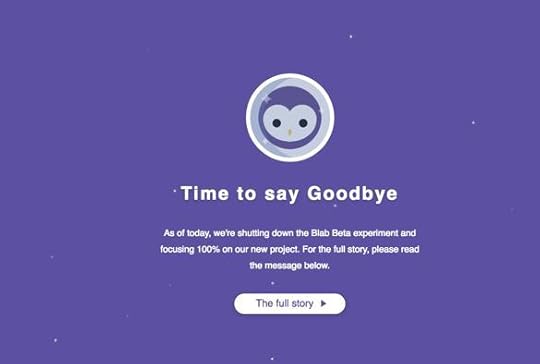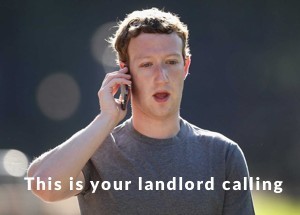Why hardly any customers see what you put on Facebook
 258 people saw this post. If I hit “boost”, I can pay to reach more.
258 people saw this post. If I hit “boost”, I can pay to reach more.Dale Jacobson, a subscriber to our mailing list and a graduate of our Build Your Brand on Twitter course, emailed me to ask why her Facebook posts aren’t being seen by fans of her page.
Dale works hard on her Facebook page, Why Antarctica? She posts almost daily. But even though Facebook knows 200 people “like” her page, it often reports to her that a post has only reached five or so people.
What “reach” really means on Facebook
If I told you there were four fewer bottles of wine in my cupboard this morning, it would be just as true but not as accurate as saying, “We had a big one last night”.
When Facebook says “your post only reached five people” it’s really saying, “We decided we’d only show your post to five people. So there.
The greatest bait and switch in advertising history
Remember when billboards for youth-orientated brands started to display Facebook URLs instead of website URLs? Facebook.com/Coke instead of CocaCola.com. The web was like so dead. Eventually, even the most fuddy-duddy players hipped themselves to the Facebook thing.
 “Hello, my beautiful customers.”
“Hello, my beautiful customers.”These companies spent a fortune building an audience for their Facebook page. Smaller companies might not have had billboard dollars but they sweated expensive time into building a following.
Businesses large and small were falling over themselves to help Facebook increase its market value. And Facebook graciously let them.
Oceans of money that could have gone into driving traffic to corporate websites were drained sending people to Facebook pages instead.
It was exhilarating to marketers. When you liked them on Facebook they could not only count you but they could see your pretty faces. They knew who you were, how old you were, where you were. They were so intoxicated by your presence on their Facebook page that they forgot they couldn’t contact you without Facebook’s help.
Facebook drops the hammer on that communication
Then marketers noticed their “reach” started to fall off a cliff.
Once upon a time a post to a Facebook page might have reached 20% or more of the fans of that page. Reach depended on how engaged people were with the page. (Once Facebook detects your interest in a page has waned, it shows you less from that page.)
But 20% wasn’t bad. Many email marketers would be cockahoop with an open rate of 20% for their emails.
Today, you can expect Facebook to show a post to about 6% of your fans.
Why did Facebook throttle the reach of posts?
Why the bait and switch? Because Facebook doesn’t make money showing people posts for free. It makes money when you pay to “boost” a post.
That’s right, Facebook sat back rubbing its hands while marketers built audiences they could only reach by the grace of Facebook. Then it held out its palm to be crossed with silver.
Basically, Facebook told Dale that if she wants to reach more than five or so of her 200 fans, she’s going to have to pay to do it.
What can we learn from Facebook’s bait and switch?
 Here today, gone tomorrow. Blab grew to 3.9 million users in its first year. Then one day they visited the site to find this. Hopefully none of those users invested too much in building their Blab presence.
Here today, gone tomorrow. Blab grew to 3.9 million users in its first year. Then one day they visited the site to find this. Hopefully none of those users invested too much in building their Blab presence.1. Be wary of building on someone else’s land
You don’t own your Facebook page or your Facebook audience. Mark Zuckerberg does.
 If you have a Facebook page, you don’t own it. Mark Zuckerberg does.
If you have a Facebook page, you don’t own it. Mark Zuckerberg does.The same is true on every social network — Twitter, Pinterest, LinkedIn… The rules can change anytime. If you’ve got half an hour, buy me a beer and I’ll talk to you about all the times people have been caught since I started working in social media in 2005.
It’s not just social media where people get caught out. At the moment, I’m tracking people who sell online courses on sites like Udemy then scream blue murder when the site changes its commission structure and other rules.
A few months ago Udemy told all instructors their courses could be priced only between $20 and $50. Imagine hearing that when you’ve spent months creating a course you were selling for $500? Then, by the way, it decided last week that this had been a boo boo and that the ceiling price was going up to $200. Whoops!
That isn’t to say there isn’t a place for building a following in social media or building something on someone else’s land. It’s an argument for making sure your cost/benefit analysis takes into account that you could lose everything you’ve put into the social network without notice. Or things could get more expensive very quickly.
2. Your Facebook page or other social media presence should never ever be the hub
It’s boringly true that social media is important to growing your reputation. You don’t need me to give you half a dozen examples of people who owe their livelihood to people finding them through social media. Justin Bieber might’ve been discovered on YouTube but he doesn’t rely on it today as his primary way to communicate with his fans.
Your website should be the hub of your online presence. A significant portion of your social media effort should be devoted to getting people to visit your website and join your mailing list. Because it’s all yours. No one can take away from you, no one can change the rules, no one can charge you for communicating with people who have given you their contact details.
Your presence in social media is a spoke coming off that hub. That way if you lose a spoke you don’t lose the whole system. Don’t be the guy who put all his eggs in MySpace or Google plus. Build your own intellectual property asset and use marks are good works as you see fit, just remember he’s using you to.
Isn’t it ironic?
This page is adorned with social sharing buttons and I’d be hugely grateful if you’d use one (or even more) of them to help get the word out about this site. Let’s beat Facebook at its own game and help a business grow without having to pay Facebook!
The post Why hardly any customers see what you put on Facebook appeared first on Taleist.



